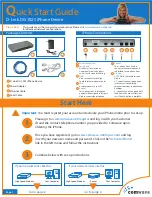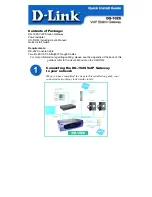
2
Management
45
For
example,
the
bytes_in
statistic
associated
with
the
sfp1
interface
is
identified
with
the
path:
/ifaces/sfp1/bytes_in
These
variable
references
in
paths
are
indicated
in
the
Statistics
Reference
using
the
[..n]
notation.
Types of statistic
Not
all
statistics
are
pure
counters.
The
possible
types
are:
•
Counter
–
The
value
is
positive
and
only
increments.
•
Momentaneous
–
The
value
can
vary
arbitrarily.
•
Min
–
Retains
the
smallest
observed
value.
•
Max
–
Retains
the
largest
observed
value.
•
None
–
Not
a
numerical
value.
Typically,
this
is
a
string
value.
As
described
in
the
introduction
to
the
Statistics
Reference
,
the
numerical
values
can
vary
from
8
bit
unsigned
integer
up
to
a
64
bit
signed
integer,
depending
on
the
expected
range
of
the
statistic.
All
values
are
reset
between
system
restarts
so
that
statistics
are
not
carried
over.
Using the statistics command
The
CLI
command
statistics
is
used
to
display
the
value
of
one
or
more
statistics
at
a
moment
in
time
or
at
a
regular
interval.
Entering
this
command
without
options
will
initially
give
the
following
response:
Device:/>
statistics
The
list
of
polled
values
is
empty
The
command
maintains
a
list
of
statistics
that
can
be
polled.
It
is
necessary
to
first
add
to
the
list
using
the
‐
add
option.
Suppose
that
there
is
a
requirement
to
see
the
number
of
active
system
users
every
10
seconds.
The
command
to
add
this
to
the
list
is:
Device:/>
statistics
‐
add
/authentication/system/active_users_system
The
new
contents
of
the
list
can
now
be
displayed.
At
the
same
time,
all
statistics
on
the
list
are
polled:
Device:/>
statistics
Name
Value
Unit
‐‐‐‐‐‐‐‐‐‐‐‐‐‐‐‐‐‐‐‐‐‐‐‐‐‐‐‐‐‐‐‐‐‐‐‐‐‐‐‐‐‐ ‐‐‐‐‐ ‐‐‐‐‐
/authentication/system/active_users_system
1
users
A
list
if
all
statistics
that
can
be
polled
is
output
from
the
command:
Device:/>
statistics
‐
listall
















































